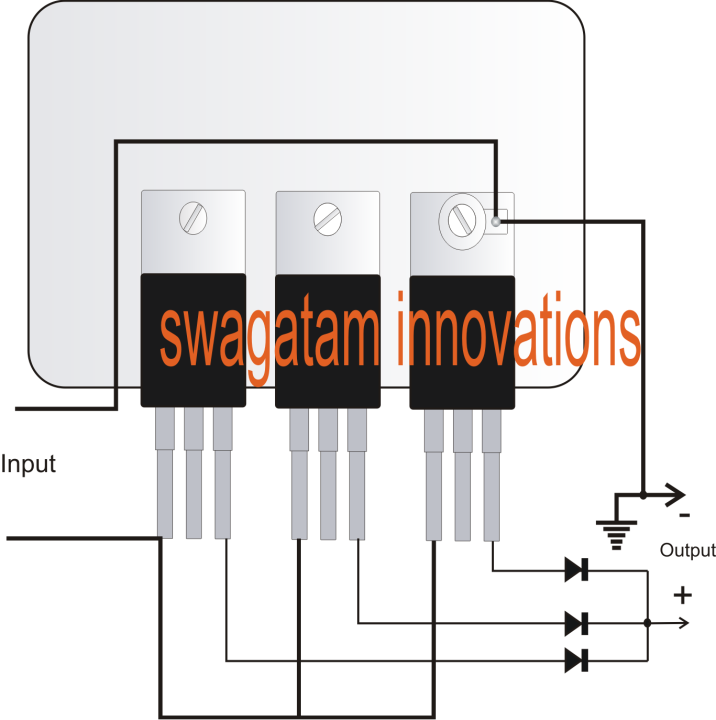Voltage regulator chips generally possess their optimum current output specs fixed to some specific levels. Increasing current to a higher level would usually require external out board transistors and difficult connected circuitry which happen to be tough to configure for the fresh hobbyists. Placing some of those in parallel, probably cracks the situation.
Even though not advised by a lot of, more current from 78XX voltage regulators can be easily achieved by hooking up the regulators in parallel, as demonstrated in this article diagram.
Right here we are able to observe the terminals of the all the three ICs hooked up in parallel apart from the output pins which can be closed with individual diodes.
In spite of this the above connection may possibly face an important disadvantage. Since all the ICs would most likely not have accurately similar features and specs may vary with their existing limitations, and undoubtedly result in one of them supplying greater amount of current than the other, and overheating in the course.
Despite the fact that this is not going to cause a danger to the ICs as these are invariably thermally safeguarded from inside, it's never recommended that you have a semiconductor device sizzle pointlessly.
The problem can be quite conveniently handled by hooking up the alternatives over a common heatsink, as demonstrated in the diagram below.
Considering that the tab for the ICs link up with their identical common leads (ground lead), does not require any kind of isolation by means of mica isolation kit etc.
Just simply get them on-board over a very common aluminium plate and you can now relax as the heat dissipation across the plate would contribute to correct transition of heat allowing each one of these with an equal share of current at their specific outputs which in return would trigger an optimally combined higher current outputs, as essential.
